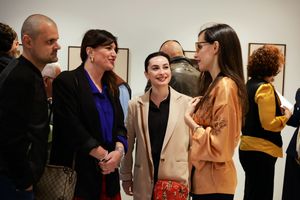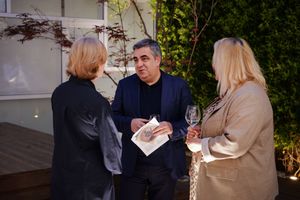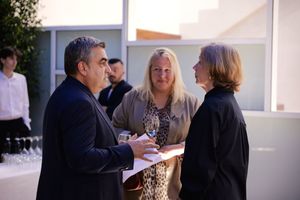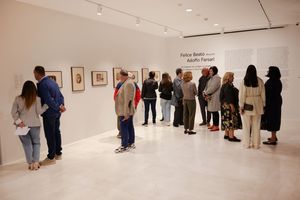Felice Beato and Adolfo Farsari
Two Italians in the Far East (1863-1890)
–
In the century of travel and travelers, photography immediately becomes a powerful ally in disseminating knowledge of exotic lands and cultures. Two Italians, Felice Beato and Adolfo Farsari, made a significant contribution to the understanding of Japan – which, starting from 1854, began to break its two-century-long complete isolation from the rest of the world - contributing to nourish the cultural phenomenon of Japonisme in Europe. Felice Beato arrives in Yokohama in 1863, after a pioneering experience as a war photographer in Crimea, India and China. He has a fiery temperament, a British passport and a significant network of diplomatic connections that allows him to reach and photograph places and situations in Japan that are inaccessible to most. He is credited with some remarkable and groundbreaking achievements: the development of hand colouring of albumen photographic prints (through local artists and iconographic models at times inspired by the woodblock tradition of the Floating World - ukiyo-e); the introduction of studio portraiture in Japan to depict customs and traditions of daily life; the crafting, from 1868, of souvenir albums, a product tailored for Western customers. His work marks the onset of the extraordinary blossoming of Yokohama Shashin (Yokohama-style Photography), facilitated through the mentorship in his studio, of photographers such as Kusakabe Kimbei, or through the images in his archive, as in the case of his competitor and friend Raimund von Stillfried, to whom Beato handed over the business in 1877. A legacy embraced and taken to the highest levels in hand coloring by another Italian, Adolfo Farsari: an adventurer who arrived in Japan in 1876 with an American passport (obtained after participating in the Civil War). Through the acquisition of the Stillfried and Anderson archives, he inherited some of Felice Beato's plates.
These extraordinary events are narrated in the exhibition through the reproduction of the plates from two souvenir albums, both entitled Japan. This type of product is clearly intended for the Western market: Beato's album features lengthy typewritten captions in English, written from a Western perspective, not devoid of interpretations reflecting prejudices of the time, or aiming to emphasize the exotic aspects of Japanese culture. Beato's Japan Album falls into the type he marketed as 'Half Album' with 51 photographs, while there are 42 subjects in Farsari's Album. Both are significant works in terms of photographic quality. Farsari's album is accompanied by a prestigious cover in typical black lacquer with relief inlays in ivory and gold lacquer. These albums are the result of the work of a team with various specialisations. In 1891, A. Farsari and Co. employed as many as 31 people, including photographers, assistants, painters and lacquerers.
What stands out in these images is a Japan wrapped in dreams and nostalgia. In Beato's case, this is particularly evident through the softly shaded ovals enclosing subjects captured in the studio: examples of refined feminine beauty, samurai, monks and scenes of daily life. While Beato's album guides us through Japanese customs and traditions, in Farsari's work, views of iconic places radiate beauty and chromatic varieties of landscapes adorned with irises, wisterias and cherry blossoms, sacred gates and temples nestled in magical natural settings. Places that seem frozen in time, captured in shots that attempt to retain the inevitable transformative force of modernity.
Exhibition Credits
- Curated by
Fondazione Alinari per la Fotografia
- An exhibition.
Marubi National Museum of Photography.
Fondazione Alinari per la Fotografia. - Scientific consultant.
Rossella Menegazzo
- Concept and Iconographic Research.
Rita Scartoni
- Exhibition coordinators.
Claudia Baroncini
Luçjan Bedeni - Curated by
Fondazione Alinari per la Fotografia
- Texts and Captions.
Rita Scartoni
Muriel Prandato
Francesca Romana Raganella - Translation.
Tereza Çuni
- Fine Art Prints.
Centerchrome, Calenzano (Firenze)
- Supported by.
Ministry of Economy, Culture and Innovation
Istituto Italiano di Cultura di Tirana - Set up.
Kolë Guraziu
Gjergj Spathari - Design.
Bardhi Haliti
- An exhibition.
Marubi National Museum of Photography.
Fondazione Alinari per la Fotografia. - Supported by.
Ministry of Economy, Culture and Innovation
Istituto Italiano di Cultura di Tirana - Scientific consultant.
Rossella Menegazzo
- Concept and Iconographic Research.
Rita Scartoni
- Exhibition coordinators.
Claudia Baroncini
Luçjan Bedeni - Texts and Captions.
Rita Scartoni
Muriel Prandato
Francesca Romana Raganella - Translation.
Tereza Çuni
- Fine Art Prints.
Centerchrome, Calenzano (Firenze)
- Set up.
Kolë Guraziu
Gjergj Spathari - Design.
Bardhi Haliti












































